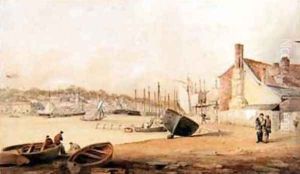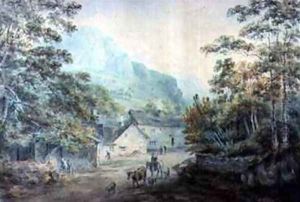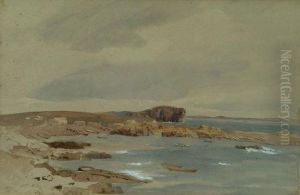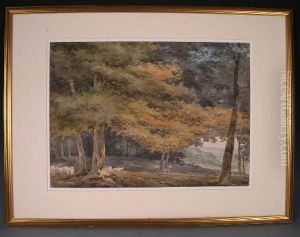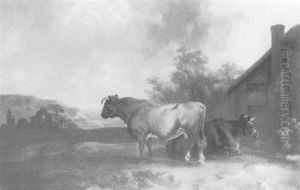William Sawrey Gilpin Paintings
William Sawrey Gilpin, born in 1762, was a notable British artist and landscape gardener, recognized for his significant contribution to the picturesque movement in English landscape gardening. Gilpin's career began in the realms of painting and illustration, where he initially made his mark. He was part of a distinguished family deeply involved in the arts; his uncle, William Gilpin, was a pioneer of the picturesque movement, greatly influencing Sawrey Gilpin's own perspectives and work.
Before venturing into landscape gardening, Sawrey Gilpin was an accomplished watercolourist and illustrator. His artistic talents were not confined to paper alone; he had an exceptional ability to translate his artistic vision into the landscape itself, marrying natural beauty with artful composition. This transition from canvas to garden was seamless, as his understanding of aesthetics and natural scenery was profound.
Gilpin's approach to landscape gardening was revolutionary. He advocated for an organic, naturalistic style, moving away from the formal, geometrical layouts that had dominated English gardens prior. His designs were characterized by their mimicry of natural landscapes, incorporating irregular features, water bodies, and strategically placed trees and shrubs to enhance the overall picturesque effect.
Among his notable projects were the improvements he made to the grounds of properties such as Nuneham Courtenay in Oxfordshire, and the estate of the Earl of Essex at Cassiobury Park. Through these projects, Gilpin demonstrated his prowess in transforming cultivated landscapes into scenes that appeared effortlessly natural, yet were carefully composed to evoke beauty and tranquillity.
William Sawrey Gilpin's legacy is not merely in the gardens he left behind but also in his influence on the evolution of landscape gardening in Britain. His work paved the way for future generations of gardeners and landscape architects to explore and embrace the picturesque in their designs. Gilpin passed away in 1843, leaving behind a body of work that continues to be celebrated for its artistic merit and visionary approach to landscape design.
